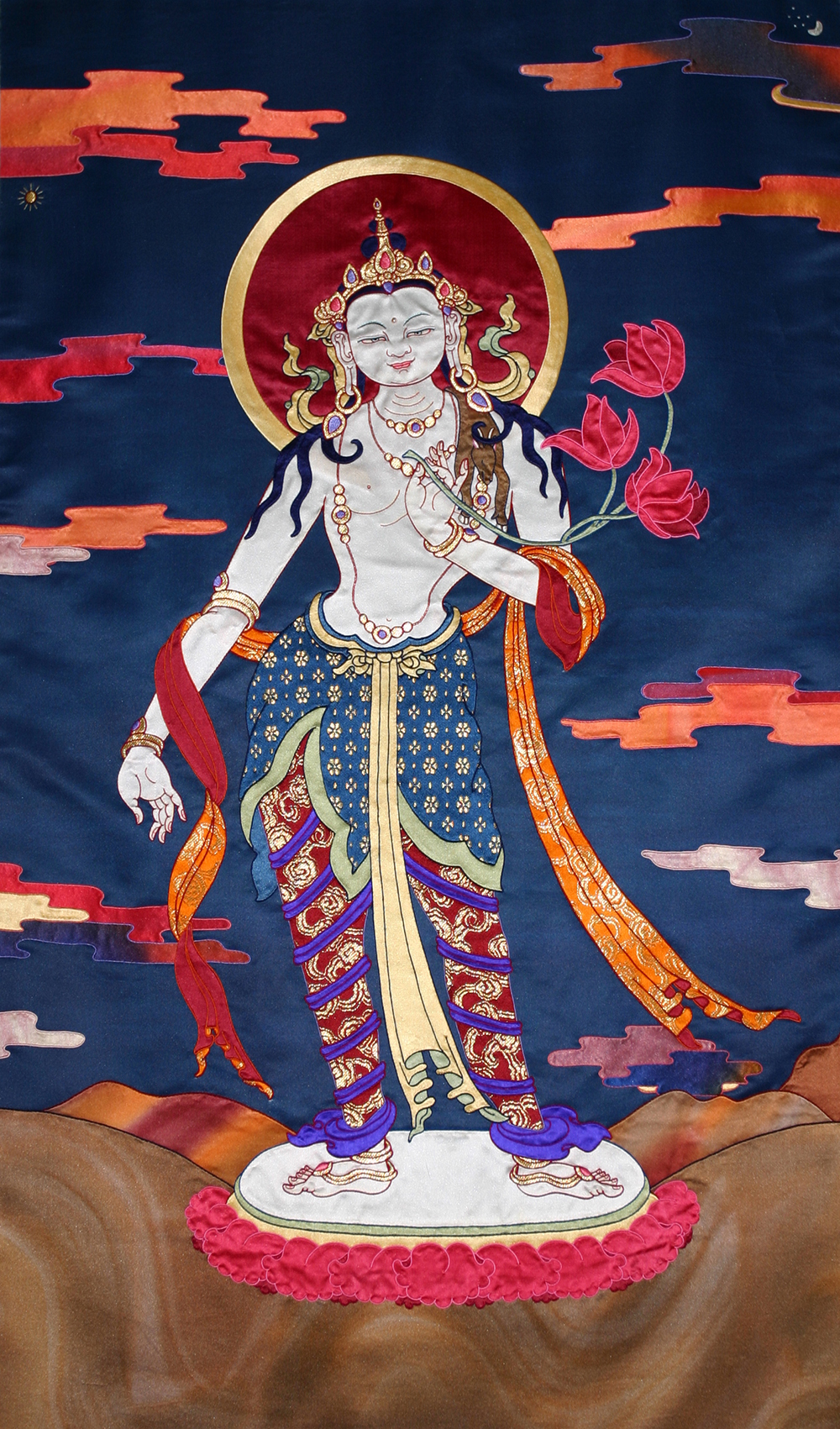
Padmapani, 2004
Silk satin, charmeuse, and brocade
34″ x 20″ (87 x 51 cm) plus brocade frame
60″ x 35″ (153 x 90 cm) finished
Among the many forms of Avalokiteshvara, this two-armed, single-faced form called Padmapani is probably the oldest. Avalokiteshvara is the embodiment of all the buddhas’ infinite compassion. During the Buddha Shakyamuni’s life, he manifested as one of the Buddha’s major bodhisattva disciples and played an important role in many of the Buddha’s discourses, including the Heart Sutra in which he explains how a bodhisattva gains direct insight into the ultimate nature of reality. Avalokiteshvara in the form of Padmapani is often seen in thangkas of Buddha Shakyamuni, flanking the Buddha’s throne opposite another boddhisattva, either Manjushri or Vajrapani. This figure is also often depicted in sculptures. Rarely is it seen alone in a thangka like this one.
Padmapani means lotus-in-hand, and his left hand holds the stalk of the lotus. The right hand, opening outward, is lowered in a gesture of granting favors, which also indicates his readiness to help. Draped over his left shoulder is the skin of a wild deer renowned for its compassionate nature.

You have Successfully Subscribed!
By signing up here, you are agreeing to receive weekly emails plus occasional news, offers, images and inspiration from Leslie Rinchen-Wongmo. Easy unsubscribe links are provided in every email.